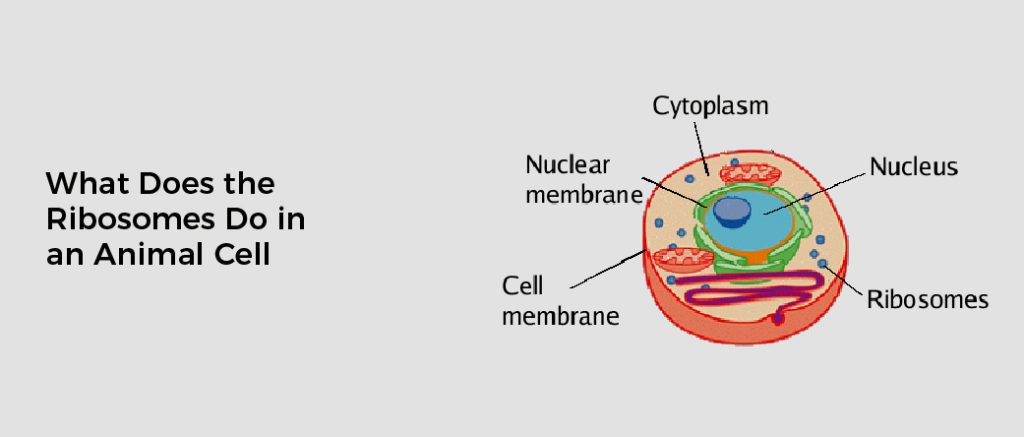Ribosomes play a major role in producing proteins required for normal cell functioning. Found in all living organisms, they are critical to the process of translation — converting genetic information encoded in messenger RNA into functional proteins that carry out numerous cellular activities. Without ribosomes, life as we know it would not exist! This article will explore precisely what ribosomes do within an animal cell and why these small organelles are important for optimal health and proper biological functioning.
KEY TERMS
- Ribosomes: cellular structures that are responsible for protein synthesis.
- Protein synthesis: the process of building chains of amino acids, the building blocks of proteins.
- RNA (ribonucleic acid): genetic material that carries the code for protein synthesis.
- Codon: a group of three nucleotides in RNA that corresponds to a specific amino acid.
- Peptide bond: the chemical bond formed between two amino acids that link them together in a protein chain.
- Large subunit: responsible for peptide bond formation.
- Small subunit: responsible for recognizing the correct RNA codon and bringing the correct amino acid to the peptide bond site.
- Prokaryotic cells: cells that lack a nucleus and membrane-bound organelles, such as bacteria.
- Eukaryotic cells: cells that have a nucleus and membrane-bound organelles.
What are Ribosomes?
The ribosome is a complex intercellular structure that performs the translation of an mRNA sequence into a polypeptide chain. Each mRNA molecule contains a codon derived from a template DNA strand. These codons can be translated into a sequence of amino acids that eventually form a polypeptide.
The ribosome is made of two-thirds RNA and one-third protein. The small ribosomal subunit binds to the 5′ end of the mRNA and is able to move forward five to three nm along the mRNA. As the subunit moves forward, tRNAs with complementary anticodons bind to the mRNA’s codons. When the subunit reaches the stop codon, it separates from the tRNA and the mRNA.
When Does the Ribosomes Start to do Work in an Animal Cell?
Ribosomes begin to work in an animal cell as soon as the cell needs to produce proteins. This can happen at any time, depending on the needs of the cell. For example, a cell may need to produce more enzymes in response to an increase in glucose levels, or it may need to produce more structural proteins to support cell growth. Once activated, the ribosomes will read the genetic code of the RNA and use it to build the corresponding protein.
Ribosomes Structure
Ribosomes are composed of two subunits, a large subunit and a small subunit. The large subunit is responsible for peptide bond formation, and the small subunit recognizes the correct RNA codon and brings the correct amino acid to the peptide bond site.
The large subunit comprises two ribosomal RNA (rRNA) molecules, the 23S and 5S rRNA, and about 34 different proteins. Moreover, the small subunit is composed of one ribosomal RNA molecule, called the 16S rRNA, and about 21 different proteins.
Both the large and small subunits have a specific shape and structure that allows them to interact with each other and with the RNA and amino acids during protein synthesis. The ribosomes are not static structures; they can change their shape and move along the mRNA during translation.
Ribosomes are found in the cytoplasm of eukaryotic cells. They are also found in prokaryotic cells (such as bacteria), which are composed of two subunits but smaller than eukaryotic ribosomes.Top of Form
How Does Protein Synthesis Occur in Animal Cells?
The process of synthesizing a polypeptide chain in an animal cell is called protein synthesis. It involves three major steps. These are the transcription, translation, and post-transcriptional modifications.
- Transcription: In this step, a small section of DNA is copied into mRNA. This mRNA molecule travels through the nucleus and attaches itself to a ribosome. A ribosome is a protein that consists of several proteins. Ribosomes can be free in the cytoplasm or attached to the rough endoplasmic reticulum.
- Translation: In this step, mRNA binds to a tRNA that carries a coded amino acid sequence. As the tRNA moves into the ribosome, the amino acids are transferred to the growing polypeptide.
- Post-translational Modification: After the tRNA moves into the ribosome, a peptidyl transferase catalyzes the formation of a covalent bond between the amino acid and the growing polypeptide. Some other chemical groups are added to the structure of the amino acid. Examples of these chemical groups are acetylation, methylation, and hydroxylation.
The Functions of Animal Cell Ribosomes
- The main function of ribosomes in animal cells is to synthesize proteins.
- They read the genetic code of RNA and use it to build chains of amino acids, which are the building blocks of proteins.
- Ribosomes are composed of both ribosomal RNA (rRNA) and proteins.
- The large subunit is responsible for peptide bond formation, while the small subunit is responsible for recognizing the correct RNA codon and bringing the correct amino acid to the peptide bond site.
- Protein synthesis is vital for the growth and repair of tissues, the regulation of cellular processes, and the maintenance of overall cellular function.
- Ribosomes can move along the mRNA during translation, allowing for multiple proteins to be synthesized at the same time.
- Proteins produced by ribosomes in animal cells include enzymes, hormones, structural proteins, and transport proteins.
- These proteins play a vital role in the cell’s functions such as metabolism, cell division, cell signaling, and transport of molecules across the cell membrane.
Conclusion
In conclusion, ribosomes are cellular structures that play a critical role in protein synthesis in animal cells. They read the genetic code of RNA and use that code to build chains of amino acids, which are the building blocks of proteins.
The large subunit is responsible for peptide bond formation, and the small subunit recognizes the correct RNA codon and brings the correct amino acid to the peptide bond site. The process of protein synthesis is vital for the growth and repair of tissues, the regulation of cellular processes, and the maintenance of overall cellular function.
The ribosomes are not static structures; they can change their shape and move along the mRNA during translation. They are composed of ribosomal RNA (rRNA) and proteins found in the cytoplasm of eukaryotic cells.


![What Does The Sun Produce [Updated Guide]](https://higheducations.com/wp-content/uploads/2023/03/What-Does-The-Sun-Produce-Updated-Guide-150x150.jpg)